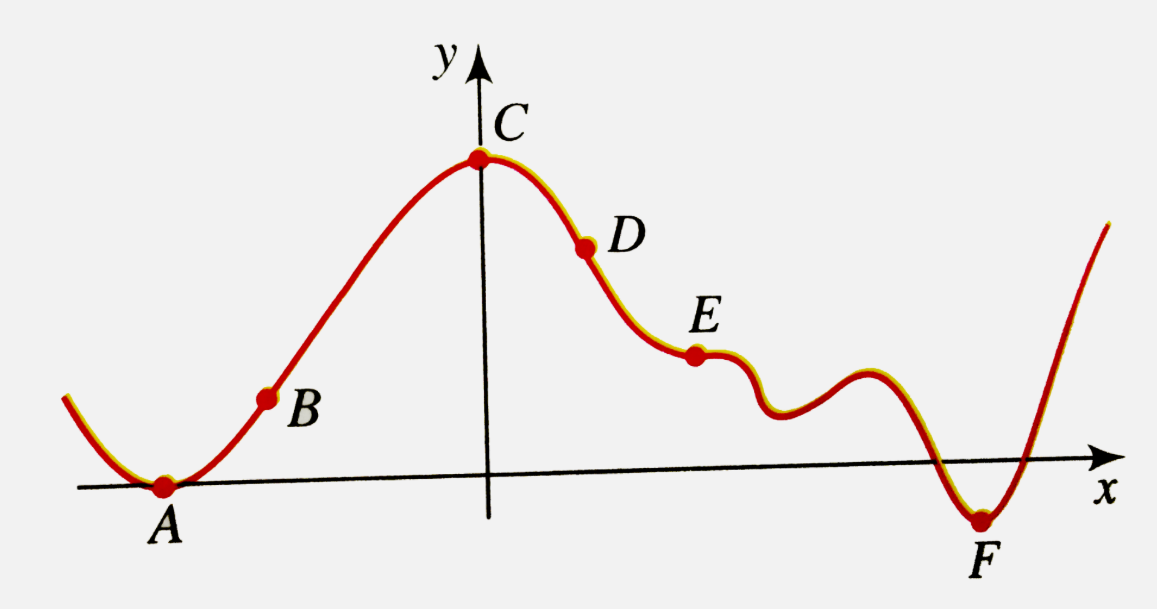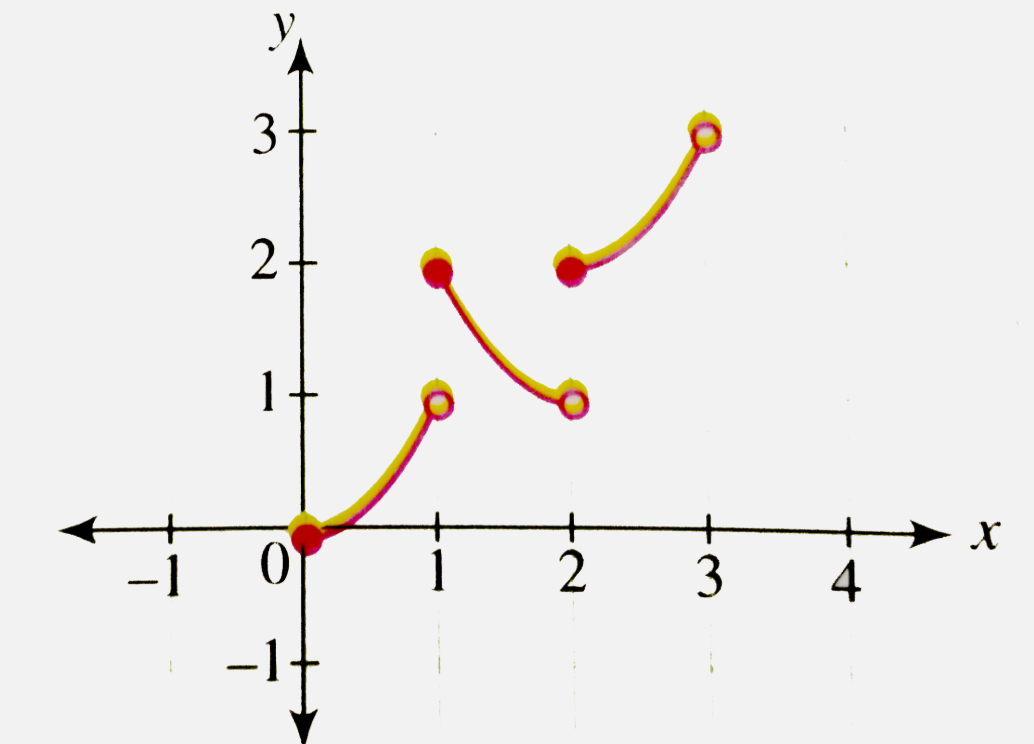The graph of y = f(x) is given with six labelled points. Anser the following questions.
(a) At which point f'(x) has the greatest value?
(b) At which point f(x) and f'(x) both are zero?
(c) At how many point f'(x) is negative ?
(d) Which is the point of infection?
 Solution in Tamil
Solution in Tamil
(a) B, (b)A, (c)2, (d) E
Topper's Solved these Questions
- BOOK - CENGAGECHAPTER - GETTING STARTED WITH GRAPHSEXERCISE - Exercise18videos
GETTING STARTED WITH GRAPHS
- BOOK - CENGAGECHAPTER - FUNCTIONSEXERCISE - Question Bank21videos
FUNCTIONS
- BOOK - CENGAGECHAPTER - GRAPH OF INVERSE TRIGONOMETRIC FUNCTIONSEXERCISE - Exercise18videos
GRAPH OF INVERSE TRIGONOMETRIC FUNCTIONS
Similar Questions
Does the following graph pass the vertical or horizontal line test ?
 02:03View Solution
02:03View SolutionIf there are four distinct real numbers satisfying thẻ equation ∣∣x2−4x−7∣∣=n, then number of integers in the range of n is
View SolutionDraw the graph of y=tan−1x+cot−1x
View SolutionWhich has the smallest bond angles (X−S−X) in the given molecules?
02:11View SolutionThe diagram shows the graph of the derivative of a functin f(x) for 0≤x≤4 with f(0) = 0. Which of the following could be correct statements for y = f(x)?
(##CENGRAC01S01021_Q01.png width=80%><br>(a)Tan≥ntl∈e→y=f(x)atx=0makesan∠of sec^(-1) sqrt 5 with the x - axis.
(b) f is increasing in (0, 3).
(c) x = 1 is both an inflection point and the point of local extremum.
(d) Number of critical point on y = f(x) is two.02:10View SolutionThe graph of y = f(x) is given with six labelled points. Anser the following questions.
(a) At which point f'(x) has the greatest value?
(b) At which point f(x) and f'(x) both are zero?
(c) At how many point f'(x) is negative ?
(d) Which is the point of infection?
 02:17View Solution
02:17View SolutionDetermine the point of symmetry of a regular hexagon.
02:10View SolutionThe inequation represented by the graph given below is :
03:02View SolutionThe inequation that best describes the graph given below is _________
01:49View SolutionThe inequation that best describes the following graph is _________
03:17View SolutionIn the given figure, PQRS is a parallelogram. A and B are the mid-point of ¯¯¯¯¯¯PQ and ¯¯¯¯¯SR respectively. If PS=BR, then the quadrilateral ADBC is a…………………… ,
ltimg src="https://d10lpgp6xz60nq.cloudfront.net/physics_images/PS_MATH_IX_C12_E05_020_Q01.png" width="80%"gt03:30View SolutionAt point P, the value of (dy)/(dx) is : ltimg src="https://d10lpgp6xz60nq.cloudfront.net/physics_images/ALN_PHY_R04_E01_025_Q01.png" width="80%"gt
06:23View SolutionIf f(-x) = −f(x) for all x and if the point (-2,3) is on the graph of f , which of the following points must also be on the graph of f ?
03:07View SolutionThe point (2,−1) on the graph y=f(x) is shifted to which point on the graph of y=f(x+2)?
03:57View SolutionWhich has maximum XCX bond angle ? (X=F,Cl,Br)
02:48View SolutionThe order of reactivity of halogens is
(A) F>Cl>Br>I
(B) F < Cl < Br < I
(C) F < Cl > Br < I
(D) F < Cl < Br> I03:10View Solution

